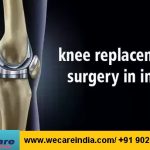Otoplasty–EAR Surgery In India
 Otoplasty, is a cosmetic surgery to change the appearance of a person’s external ears. Otoplasty can take many forms, such as bringing the ears closer to the head (often called ear pinning), reducing the size of very big ears, or reshaping various bends in the cartilage. Other reconstructive procedures deal with the deformed, or absent ears.
Otoplasty, is a cosmetic surgery to change the appearance of a person’s external ears. Otoplasty can take many forms, such as bringing the ears closer to the head (often called ear pinning), reducing the size of very big ears, or reshaping various bends in the cartilage. Other reconstructive procedures deal with the deformed, or absent ears.
Otoplasty surgery can involve a combination of moving, reshaping, adding, or removing structural ear elements. This procedure is usually performed by either an oral and maxillofacial surgeon, plastic surgeon, or ENT surgeon.
- One
- Two
What does Otoplasty do ?
It reduces the projection of prominent ears. The angle between the head and the ear is about 35°. Many people consider a greater angle to be unaesthetic. Do people talk about your ears? Were you laughed at in school? Then this surgery may be the right thing for you. It reduces the size of big ears. It corrects irregularities in the outline of the ear, such as the outline of ‘pointy ears’ or of ‘lop ears’. It may also help correct earlobe problems such as lacerations due to heavy earrings, enlargement of the earlobe due to aging and scars from previous face-lifts.
Is Otoplasty for you ?
General good health and realistic expectations are prerequisites. It is also important to understand the surgery. Otoplasty will not alter hearing ability. What is important for successful otoplasty is that the ears be in proportion to the size and shape of the face and head.
When considering otoplasty, parents must be confident that they have their child’s best interests at heart. A positive attitude toward the surgery is an important factor in all facial plastic surgery, but it is especially critical when the patient is a child or adolescent.
Adult candidates for otoplasty should understand that the firmer cartilage of fully developed ears does not provide the same molding capacity as in children. A consultation with a facial plastic surgeon can help parents decide what is best for their child, not only aesthetically, but also psychologically and physically. Timing is always an important consideration. Having the procedure at a young age is highly desirable in two respects: the cartilage is extremely pliable, thereby permitting greater ease of shaping; and secondly, the child will experience psychological benefits from the cosmetic improvement.

Before Ear Surgery
We will evaluate your medical history and will advise you with regards to cessation of smoking and medications containing aspirin. The ears will be examined, evaluated and photographed. It should be kept in mind that the two ears are never symmetrical and some difference in their shape is bound to stay. The angle between the ear and the head is calculated.
The areas that will be excised or reshaped are marked and digital photographs taken in order to document the amount of improvement after surgery.
Otoplasty Procedure in India
It can be performed under local or general anaesthesia. An incision is made on the back of the ear in the crease and the cartilage is exposed. The cartilage is modified (excised or reshaped) depending on the preop plan. The angle between the ear and the head is reduced and permanent stitches are used to retain the ear in the new position.
The incision is closed with stitches under the skin and a fluffy cotton dressing is done. Bandage is placed on the ear to help in healing. The procedure takes only a couple of hours.
What to Expect After the Surgery ?
Soft dressings applied to the ears will remain for a few days. Most patients experience some mild discomfort. If you are accustomed to sleeping on your side, your sleep patterns may be disrupted for a week or so because you cannot put any pressure on the ear areas. Headbands are sometimes recommended to hold the ears in the desired position for two weeks after the surgery.
The risks are minimal. There will be a thin white scar behind the ear after healing. Because this scar is in a natural crease behind the ear, the problem of visibility is inconsequential. Anything unusual should be reported to the surgeon immediately.









